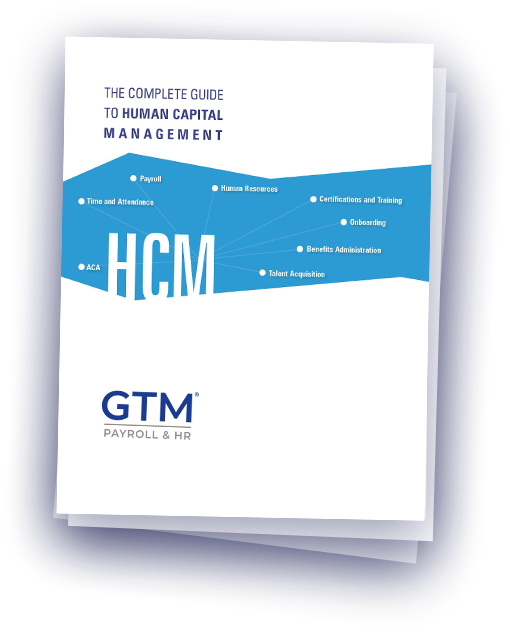
Leave Management Outsourcing Guide
 Because of the increasing complexity of leave benefits and overlapping local, state, and federal laws, it is difficult for human resource managers to stay abreast of the nuances of leave administration. Changes in existing leave laws and policies are frequent and can change from one day to the next. Outsourcing to experts who are engrossed in the latest regulatory changes greatly minimizes the risk for non-compliance and avoids costly fines and lawsuits.
Because of the increasing complexity of leave benefits and overlapping local, state, and federal laws, it is difficult for human resource managers to stay abreast of the nuances of leave administration. Changes in existing leave laws and policies are frequent and can change from one day to the next. Outsourcing to experts who are engrossed in the latest regulatory changes greatly minimizes the risk for non-compliance and avoids costly fines and lawsuits.
What’s in the Leave Management Outsourcing Guide?
This guide includes information about:
- Costs of leave administration
- Challenges employers are facing
- Benefits of outsourcing leave management
- How to choose a leave management vendor
- And much more!
Enter your information in the form below to download this free guide on outsourcing your leave management.
What is Absence Management?
Absence management or leave management is the process of managing time-off requests from employees such as vacation, family leave and sick time. Human resources is typically responsible for managing this process and sets company policies and procedures. Employees have many types of leave available to them like short- and long-term disability leave, COVID leave and paid time off. Some of those are set by the organization such as vacation policy or paid time off (PTO). Other types of leave are mandated by federal or state laws. The federal Family and Medical Leave Act (FMLA) requires employers to provide eligible employees up to twelve weeks of unpaid, job protected leave each year along with continuation of health care benefits during that time. An example of a state mandated leave is New York State Paid Family Leave that allows eligible employees to receive job-protected paid time off to care for a newborn or adopted child, seriously ill family member or for those who have a family member in the military and need to take time off for family issues resulting from the military status of a family member. Leave administration is the process of managing leave claims and documentation for the employee while maintaining compliance for the organization.
Costs of Leave Administration
There are several types of costs companies incur for employee leaves. The first is the loss of productivity from employees’ absences. Failure to track and monitor employee paid and unpaid absences can lead to excessive absenteeism. The Centers for Disease Control and Prevention (CDC) estimates that the average cost of employee absenteeism is $1,685 per employee annually for loss of productivity. Other costs organizations can incur are wages for hiring temporary workers and overtime pay for existing employees. Incorrect administration of leave benefits can lead to over payment and additional time off.
Failure to comply with mandated leave laws is another cost of absence administration. Companies and organizations are required to provide mandated benefits to employees and to make sure that employees fully understand their options. Failure to do so can result in costly fines and lawsuits. According to Society for Human Resource Management (SHRM) the average cost to defend a FMLA lawsuit is $80,000. Awards to employees who successfully sue for wrongful termination received between $87,500 and $450,000 as stated by the US Equal Employment Opportunity Commission (EEOC).
Another cost to organization is the loss of employee engagement and retention due to negative experience with the process of leave eligibility. It there is poor communication around benefits and leave policies or inconsistencies in administering leaves, employees can become disengaged leading to loss of work productivity and increased absenteeism. Employees who are not on leave and are covering for absent employees may experience increased job stress which can result in turnover.
Cost of Poor Leave Management
- Productivity loss due to absences
- Wages for temporary workers
- Overtime pay
- Legal fees for non-compliance issues
- Settlement pay out for employee lawsuits
- Fines and fees to government for non-compliance
- Disengaged employees and increased turnover T
- Time and costs needed to train managers leave law basics
Challenges today for Absence Management
There are over 450 federal, state, and local leave pieces of legislation that human resource managers need to comply with in the United States. Other challenges HR managers face are knowing which leave laws apply, determining eligibility and entitlement calculations, keeping abreast of communications with the employee on leave, sending timely notifications, monitoring for abuse and training managers on leave identification and enforcement. Some of the most difficult challenges to navigate are managing and tracking intermittent leave and situations where two pieces of legislation interact such as American Disabilities Act (ADA) and FMLA.
Paid family leave and paid sick leave laws have accelerated in the past decade. Today 10 states plus the District of Columbia have enacted paid family leave and 16 states plus the District of Columbia have enacted paid sick leave. Employers with 50 or more employees are subjected to the federal FLMA in addition to state specific policies. Since 2019, many states have enacted covid-19 specific leave laws. The Bureau of Labor Statistics reported that in 2021, 79 percent of workers had access to paid sick leave.
The complexity in managing compliance issues with leave administration have become increasingly challenging in a post-covid world. The top three challenges for HR managers are compliance for leave laws and rules, managing administrative burden and tasks, and handling an increase in accommodation requests as cited by the 2021 Absence Management Pulse survey from the Disability Management Employer Coalition (DMEC). Many businesses have added working from home as an option making verification of work time and tracking intermittent leave arduous. Added to this are childcare shortages causing employees to take leave at unprecedented rates.
Options to Manage Leave Administration
Leave administration is typically managed by Human Resources, which may rely on front line managers to identify leave cases for their direct reports and assist with some of the data and paperwork. Some companies manage leave administration 100 percent in house. When done in house, some organizations do so manually, and others purchase leave and attendance software to assist with tracking and management of the leave administration. Others may outsource certain types of leave for administration such as cobra benefits. More and more companies are outsourcing leave management to third parties. Since 2014, outsourcing of federal FMLA has increased at an average annual rate of four percent. (2019 DMEC survey)
The 2021 Absence Management Pulse survey from the DMEC shows that 45 percent of companies in source leave management, 32 percent have a combination of inhouse and outsourced called cosourced and 24 percent outsource the process.
Why Outsourcing Absence Management
Leave administration requires significant time. For insourced operations, 26 percent of organizations spend 101 or more hours a week on administration of leave management and 40 percent spend 26 or more hours a week. This time sync is greatly reduced when some or all functions of leave management are outsourced. Only eight percent of organizations that outsource spend 101 or more hours and 21 percent spend 26 or more hours. (2021 DMEC survey). By outsourcing most or all of leave administration functions, internal HR teams can save significant time to redeploy to other critical HR functions. It can also reduce the need for additional staffing to manage leave requests.
Because of the increasing complexity of leave benefits and overlapping local, state, and federal laws, it is difficult for human resource managers to stay abreast of the nuances of leave administration. Changes in existing leave laws and policies are frequent and can change from one day to the next. Outsourcing to experts who are engrossed in the latest regulatory changes greatly minimizes the risk for non-compliance and avoids costly fines and lawsuits.
The employee experience with leave requests can be improved with outsourcing. Consistent communication and accurate information enhance the overall employee satisfaction with outsourced leave administration. Employees may be more comfortable discussing their private situations and medical conditions with a confidential third party than with their manager or internal HR team. An added benefit is that outsourcing can prevent HIPPA violations as well by maintaining privacy and securing data. At a time when the labor market is tight, retaining existing employees is more important than ever.
Out of concern that leave laws won’t be adhered to, some employers offer more generous than required leave. Similarly, employers are more likely to approve leave that may not be legitimate because of confusion over overlapping leave policies, nonconcurrent leave policies and intermittent leave and eligibility requirements. Both cases result in unnecessary absenteeism. Outsourcing this function reduces costs associated with overindulgence of leave policies and mismanagement.
Benefits of Outsourcing Leave Administration
- Lifts productivity and saves time so HR professionals can focus on other important functions
- Lessens risk of non-compliance fines
- Mitigates legal risk and lawsuits
- Improves employee communications
- Increases employee satisfaction
- Reduces productivity loss and absenteeism
- Protects confidential data and avoids HIPPA violations
Disadvantages of Outsourcing Leave Administration
In the implementation phase of outsourcing, there will be time required to work with vendor to set up the process and communicate changes to employees. Plan for this in the initial set-up. There is some loss of control when outsourcing as the internal HR team won’t be as hands on with leave requests. Employees may not like contacting a third party to handle their leave requests. These disadvantages can be mitigated in the selection process of a third-party vendor. Look for references that speak to positive employee experiences and dedicated managers for your company. An online reporting system that allows you ability to review statuses of any cases will also keep your internal team access to information when they need it.
Is leave management outsourcing right for you?
When deciding whether to outsource absence management there are several factors to consider. First is the volume of leave requests and size of your employee base. It may not make sense to outsource if you have a low volume of leave requests. Another factor to consider is the expertise level of your inhouse staff to manage leave requests and keep compliant. Complexity is increased if you have employees in multi-states. Examine the available time your HR team must dedicate to leave administration. What are the tradeoffs to the company? Is the HR team’s time better spent on recruiting and retention at a time when many organizations are struggling to fill open position and retain workers during the “great resignation?”
Assess your legal risk level. Are managers properly trained and is sensitive data HIPPA compliant? Survey your employees who have accessed leave benefits. What was their level of satisfaction with the process?
Do the math. What are the costs associated with any fines and lawsuits resulting from poor management of leave requests? Consider the costs of increased absenteeism from potential abuse of leave or failure to properly track leave.
How to choose an absence management vendor
Some things to consider when choosing a partner for outsourcing leave administration are the level and access to reporting. You should be able to access reports that provide real time status of your employees leave situation. It should easily produce the information you need to know to plan internal labor resources.
Another factor is the type of leaves the vendor will manage. Are there any restrictions? Does it meet your requirements, and can you manage the ones it may not cover? Will the vendor manage all the employee communications and follow-up and remove that burden from your internal team? Review the implementation process and support required during that time. How much customization can you do for your employees? What technology will be used to make the data entry, tracking, and reporting easy? Is information secure and protected? What support is available to your employees? What forms of communication are available to them to engage with the vendor should they have questions or require assistance?
GTM’s Leave Administration Service GTM’s Leave Administration service handles all types off leaves and the entire process from compliance, documentation, approval, tracking and employee follow-up while reducing risk, maintaining compliance, and freeing up your HR team’s time. The service is delivered via a secure, cloud-based solution and backed by a dedicated team of specialists who are SHRM- and FMLA-certified professionals.
The GTM Difference for Outsourced Leave Management:
- Dedicated leave administration manager assigned to your organization for personalized service
- Employee portal to view status of their case
- Maintain confidentiality of sensitive employee information
- Up-to-date regulations and laws for federal, state, and local assuring compliance
- Run reports and view case statuses 24/7 for internal HR team
- Leave management system allows for different levels of access to maintain privacy
- FMLA regenerates as employees accrue PTO eliminating manual calculations
- Ability to upload organization specific forms
Need Help?





